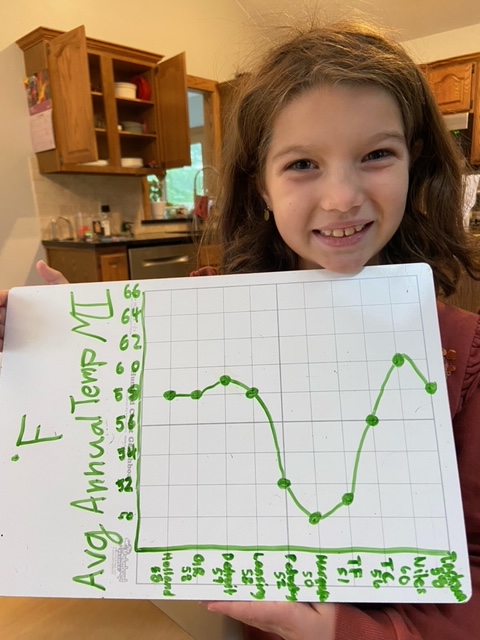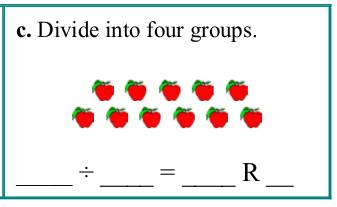
Hello again!!! |
1. Math Mammoth newsI will soon run my traditional Thanksgiving sale... starting in a week.One of my customers wrote in and said, "My daughter wanted to share her line graph with Ms. Maria from grade 4-A line graph lesson number 6 🙂." She's a happy camper! I love it when kids love their math work!  |
2. What about grading?Someone asked about GRADING. Here are my thoughts.In Math Mammoth curriculum, there is a grading chart for the end-of-chapter tests, but MM does not provide grading guidance for individual lessons. In fact, I don't want to encourage grading individual lessons with numbers/percentages on a continual basis. It can leave a wrong impression in a child's mind that mathematics is supposedly all about "getting correct answers". Instead, we should approach math work as a process of learning, a process of going through some challenges, working hard, and overcoming through work and persistence. When a child does that, you can praise them with "You worked hard and you did it!" I also advise parents to AVOID praising a child's intelligence. It has a subtle counterproductive effect (that has been found to be there in scientific studies). It goes like this: A child is praised as being smart/intelligent whenever the child gets something right. The child starts believing they're smart.  The sad thing is, then they don't learn to be persistent and to work hard. It's also been found that instead of giving a child numerical grades (like 10/15), if a teacher WRITES a personal note about "I see you worked hard! Good job!" or similar, THAT encourages the child much more than a numerical grade. See also: Growth mindset & how to (and how NOT to) praise our students |
3. Principle 2: Remember the GoalsThis is another habit or basic principle of effective math teaching. 😃What are the goals of your math teaching? Are they...
Or do you have goals such as:
These all are just "subgoals". But what is the ULTIMATE GOAL of learning school mathematics? Consider these goals:


The more you can keep these BIG REAL goals in mind, the better you can connect your subgoals to them. And the more you can keep the goals and the subgoals in mind, the better teacher you will be. For example, adding, simplifying, and multiplying fractions all connects with a broader goal of understanding parts and whole. This will then lead to ratios, proportions, and percent. Another example: the mastery of all fraction operations is necessary for solving rational equations and manipulating rational expressions in algebra courses. Tying in with the goals, remember that the BOOK or CURRICULUM is just a tool to achieve the goals — not a goal in itself. Don't ever be a slave of any math book! |
4. Division with remaindersA few years ago, one of my users was stumped by this problem... There is a picture of 11 apples and it says to "Divide into four groups." Now, 11 ÷ 4 = 2 R3. (We get two apples in each group, and three apples left over.) Here comes the part that stumped this customer: "...if I divide 11 into 4 groups, the groups have to be 2. That leaves a remainder of 3, but then the remainder is bigger than the group. It seems like it could be right anyway, but if you "check" the answer by using 11 ÷ 2, you get 5 R1." In other words, they felt that 11 ÷ 4 = 2 R3 is correct, but that the check, 11 ÷ 2, fails, because you get 5 R1. This is an interesting question! There are a few things to keep in mind:
Then also, let's think about this statement: "That leaves a remainder of 3, but then the remainder is bigger than the group." Here, we need to keep in mind:
Taking the division 11 ÷ 2 = 5 R1, using the same interpretation, we'd be dividing into TWO groups. That is not going to check the division 11 ÷ 4, where 11 are divided into four groups. The check is always simply to multiply the divisor and the quotient, and add the remainder — and you should get the dividend. |
5. Just for fun!
Thanks for reading! 🙂 Feel free to forward this issue to a friend/colleague! Subscribe here. Till next time, Maria Miller |
| Complete curriculum | Math games and interactive practice | Math Mammoth freebies | New to MM? Start here |
| Privacy & your personal data | The Parable of the Sower, part 1 | Blue Series: For filling in gaps |